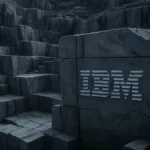From time to time, teams are created within a company’s division to collaborate on a project. Generally, a project is created to achieve an objective in terms of benefits, outcomes and outputs. This constitutes project management, which is the application of skills and experience, knowledge, methods and processes to accomplish the objectives of a project. Budget, quality of deliverables and timescales are the project management’s main components.
Collaboration and effective teamwork among members are sometimes very difficult to achieve, since team members often have to fulfill their main tasks as well. This is the reason why it is important to streamline project management, which is easier to achieve today with the help of a project management tool.
Phases of project management
Project management undergoes a series of phases that is why it needs to be streamlined for effective control. The first stage of the process is to define the project and its justification. It must have an objective to achieve, the methods to be used to reach the objective, the scope of work, how flexible it will be to accommodate changes and the assignment of responsibilities. Preparation of required documentation follows. This details the project’s aims, the constraints and timescales and the criteria for determining its success.
There should be a project plan describing how the work on the project should be executed, monitored and controlled, cost of the project and facilitation of communication. Project schedule should be closely monitored, and this involves each task, the inter-dependencies and schedule of submission/completion of each task. Integral to the entire project management plan are the persons who are to carry out the tasks.
Why streamline the project management process?
You may have everything down pat in terms of the project management plan, but there are still several things to look out for. There should be only be one project leader. If there are too many people monitoring the project, the project leader’s control over the specifics will be reduced. One unified system of project management will allow the leader to be in control and stay informed. It is easier to meet all deliverables if only one person manages the project while meeting the expectations of all stakeholders. Streamlining means you only use one project management tool across all departments.
If you streamline your project management process, you’ll improve time and cost efficiency; get a clear view of the project as you can easily monitor it using only one solution; have the ability to quickly identify risks and provide solutions immediately; view core information in real time in just one place and increase member collaboration.
Streamlining allows you to take full control of the process from start to finish. You will have standard project templates. You can generate consistent project status reports that are accurate and systematic for all concerned departments. Moreover, every phase of the project and the tasks involved in each phase are visible. It will be easier to allocate resources, create and assign new tasks, create new schedules and automate the generation of reminders.
At the crux of this is the application of a flexible and user-friendly project management software. There are three levels of project management solutions – low-end that’s suitable for small groups with limited requirements; mid-range with more robust features and high-end for larger enterprises. The last one is capable of linking team members located around the globe. Choose the right project management tool that is applicable to your organisation. Find one that is customizable to your needs, has the ability to calculate interdependencies, generate a variety of reports, has flexible scheduling option and allows you to change it navigation system.








